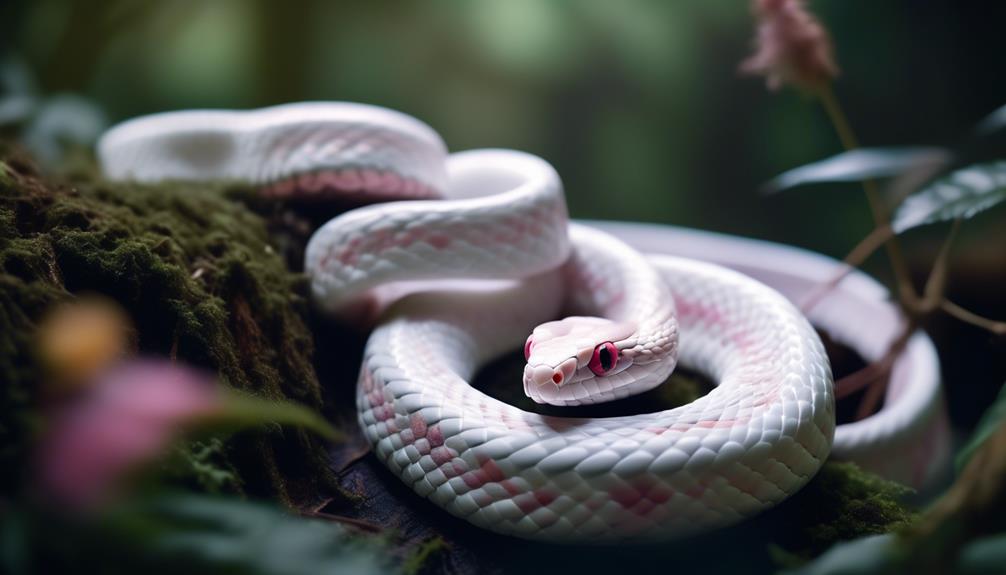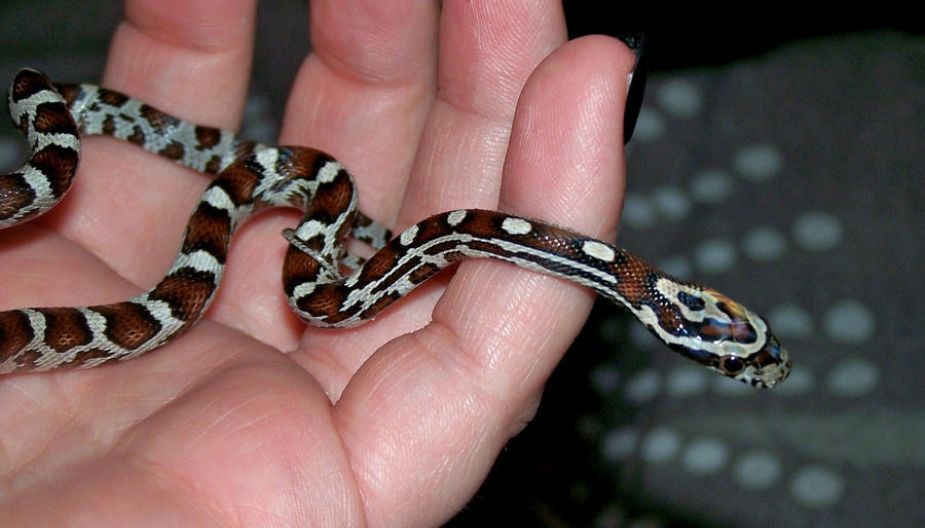When discussing a corn snake bite, the pain is frequently compared to a simple pinprick on one’s skin. However, could there be more to this seemingly innocuous bite?
The understated intensity of the pain might catch you off guard, encouraging a detailed examination of this prevalent reptilian encounter.
Yes, a corn snake bite can hurt. It’s often compared to a small pinch or scratch that might startle more than it harms.
Pain Levels of Corn Snake Bites
When bitten by a corn snake, the pain level is often likened to that of a paper cut or needle prick, varying based on the snake’s size and the location of the bite. These bites usually occur when the snake feels threatened or mistakes your hand for food. The small teeth of a corn snake can puncture the skin quickly, causing a sharp pain that’s more startling than intense.
While the initial sensation may be uncomfortable, it typically subsides swiftly. To manage the bite, start by washing the area with soap and water to prevent infection. Since corn snakes are popular as pets, it’s important to understand how to handle potential bites properly. Remember to disinfect the wound and keep an eye on it for any signs of redness or swelling. Despite the sharp pain, most corn snake bites are minor and don’t require medical attention unless an infection develops.
Factors Influencing Corn Snake Bites
Factors influencing corn snake bites include the size and age of the snake, the location of the bite on your body, and psychological factors like fear or shock that can influence the perception of pain.
- The size and age of the corn snake can affect the intensity of the bite, with adult snakes potentially causing more discomfort.
- The location of the bite on your body can impact the level of pain experienced after a corn snake bite.
- Juvenile corn snakes may deliver milder bites compared to adult corn snakes due to their size and strength.
- Psychological factors, such as fear or shock, can contribute to the perception of pain after a corn snake bite.
- The sensation of a corn snake bite is often described as a quick, sharp pain similar to a needle prick or paper cut.
Understanding these factors can help you better comprehend the variables that influence the pain experienced from a corn snake bite, allowing you to approach the situation with more knowledge and preparedness.
Managing Corn Snake Bites
To effectively manage a corn snake bite, promptly clean the wound and apply appropriate first aid measures to prevent complications and aid in the healing process. Corn snake bites are minor due to their small teeth, but it’s important to disinfect the wound to avoid unnecessary infections.
If you experience a bite while handling your snake, the first step is to stay calm. Start by washing the area with soap and water to remove any bacteria. Avoid squeezing the wound to prevent further irritation. Applying an antiseptic cream can help reduce the risk of infection. Keep the wound covered with a bandage until it heals completely.
Treatment for Corn Snake Bites
When treating a corn snake bite, start by washing the wound with cold water to reduce inflammation. Follow up by disinfecting the bite area with antiseptic soap containing ingredients that kill bacteria. This step is important to prevent infection and promote healing. After cleaning the wound, apply rubbing alcohol to further disinfect the area. If the bite is deep or bleeding, consider using a bandage to protect it from additional contamination.
Proper treatment of corn snake bites is essential to prevent complications and guarantee healing. By promptly cleaning the wound, using antiseptic products, and keeping the area protected, you can reduce inflammation, minimize the risk of infection, and support the body’s natural healing process. Remember that even though corn snake bites are usually harmless, taking care of the wound properly is key to a quick and uneventful recovery.
Prevention of Corn Snake Bites
To minimize the likelihood of corn snake bites, maintain a stress-free environment for the snakes in your care. Corn snakes, like any pet, can become stressed if their living conditions aren’t suitable. Avoid handling your pet corn snake during feeding or shedding periods as these times can trigger defensive reactions.
Educate yourself and others on safe handling techniques to reduce the risk of being bitten. Understanding corn snake behavior and body language is important in anticipating and preventing potential bites. If a bite does occur, stay calm, gently remove the snake, and clean the wound thoroughly.
It’s important to seek medical attention if the bite shows signs of infection or if you experience severe symptoms. By creating a stress-free environment, practicing safe handling, and being attentive to your pet’s cues, you can greatly lower the chances of experiencing a corn snake bite.
Frequently Asked Questions
How Painful Is Corn Snake Bite?
When a corn snake bites, you’ll likely feel a quick, sharp pain similar to a paper cut. The intensity varies based on the snake’s size and bite location. It’s more of a discomfort than severe pain, with minimal blood and potential psychological distress.
How Bad Does a Snake Bite Feel?
When a snake bites, the intensity of the pain varies based on factors like nerve response and location. Though brief, the discomfort can be unsettling, but most find the aftermath more startling than painful.
What Snake Has the Least Painful Bite?
When it comes to snake bites, the mildest concerning pain is often associated with species like the ball python, garter snake, king snake, milk snake, rat snake, boa constrictor, carpet python, rosy boa, California kingsnake, and Children’s python.
Why Does My Corn Snake Keep Biting Me?
Your corn snake may bite due to stress, hunger, or improper handling. Assess its environment, feeding habits, and interactions. Evaluate its temperament, prey preferences, and shedding process. Guarantee proper care, habitat size, and health check-ups to minimize biting incidents.
Conclusion
To sum up, while a corn snake bite may initially startle you, the pain is typically minimal and manageable. Factors such as the snake’s age and size can influence the discomfort level experienced.
By understanding how to handle and treat corn snake bites, you can alleviate any potential pain or concerns. Remember, while the idea of a snake bite may sound intimidating, the reality is often far less painful than one might expect.


